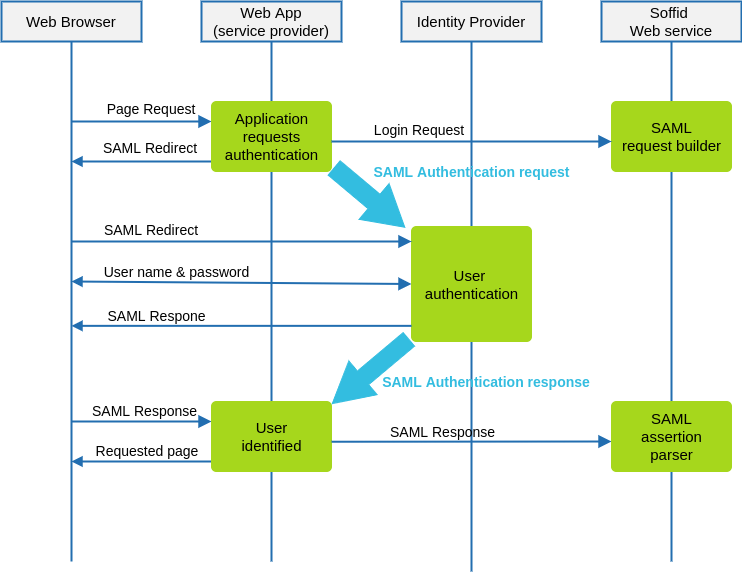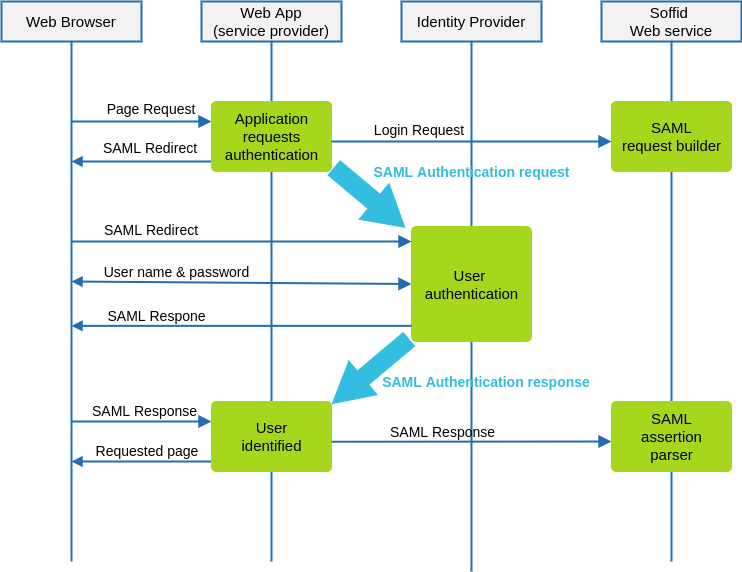Connecting your custom applications
&&TODO&& pagina 46
Introduction
SAML 2.0 is a complex and not easy to implement standard. There are some libraries that can help somewhat, but a correct implementation needs a deep knowledge of SAML protocol, and is always hard to test and debug.
To make it easier, Soffid provides some JSON rest web services, that can help any application to correctly implement the SAML service provider part of the protocol.
Data flow
The following diagram, shows the resulting data flow between the end user, your application, the identity provider and Soffid web services:


- The
At the inital step, the endend-user requests access to a protectedpage.page-
2. The custom application can check the user identity looking up a session variable. By the time being, the user is not authenticated.
-
Your3. The custom application issues a JSON request to Soffid web service. In turn, Soffid web service builds, signs and maybe encrypts a SAML request -
Your4. Then custom application taks theJSORJSON request and builds an HTTP Redirect response with the received data. -
5. The identity provider identifies the user as usual.
-
Your6. The custom application receives the SAML response. At this point,yourthe application packs and forwards the received data to Soffid Web Service. -
7. Soffid Web Service decrypts and checks SAML response integrity and correctnes, and returns a JSON document specifying the success or failure status, and the underlying identity attributes. If needed, Soffid web service can provision a new identity in target systems on the fly.
-
Your8. The custom application gets the identity data, stores it in a session variable and provides the protected resource to the end user.
In order to get itit, working,will yoube must:necessary:
Declare
yourthe custom application as an internal service provider in the federation pageCreate a Soffid application account for
custom applicationyourtheapplication.Implement the protection
filterImplement the endpoint where the SAML
responsesresponse must besent
